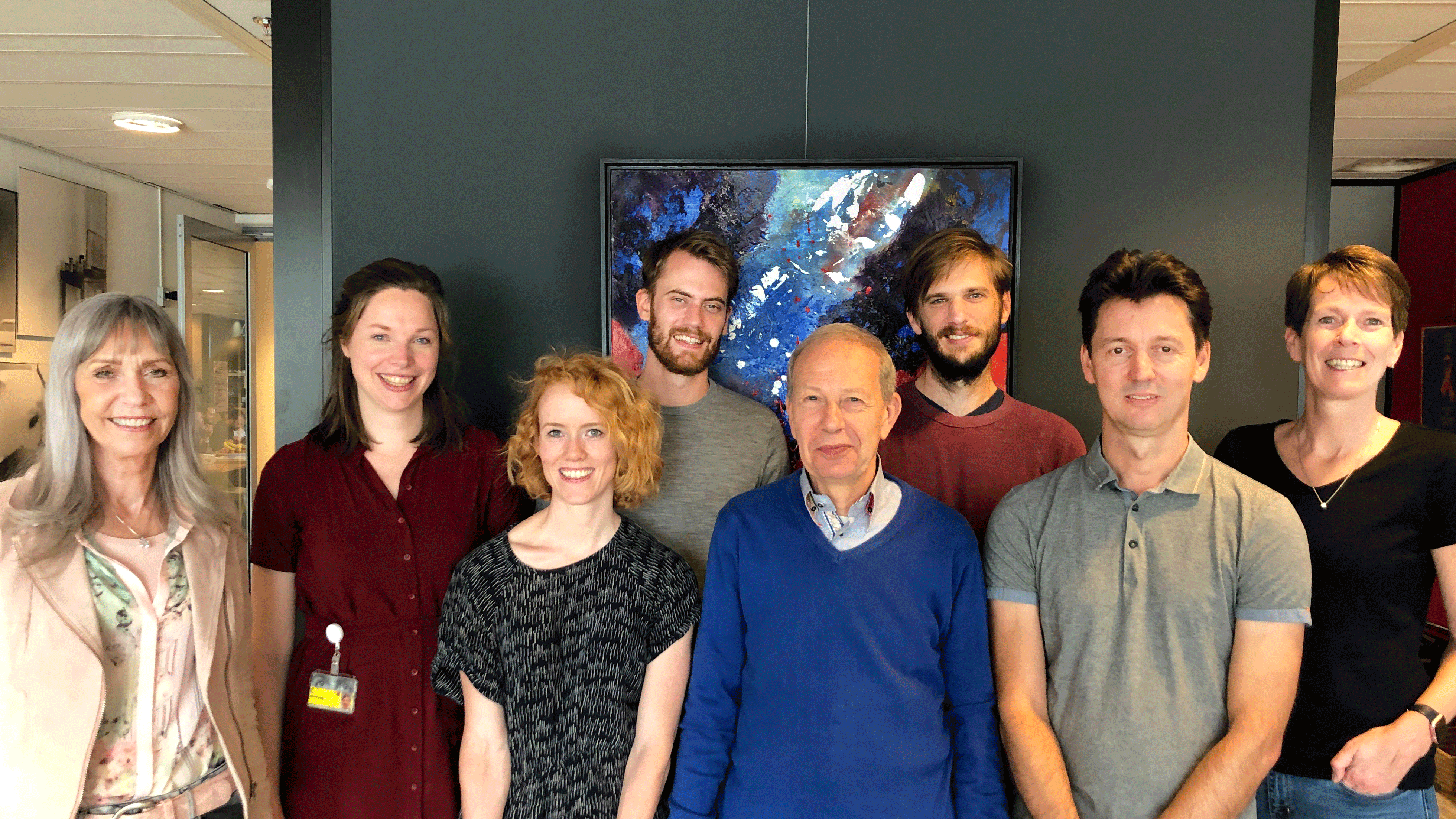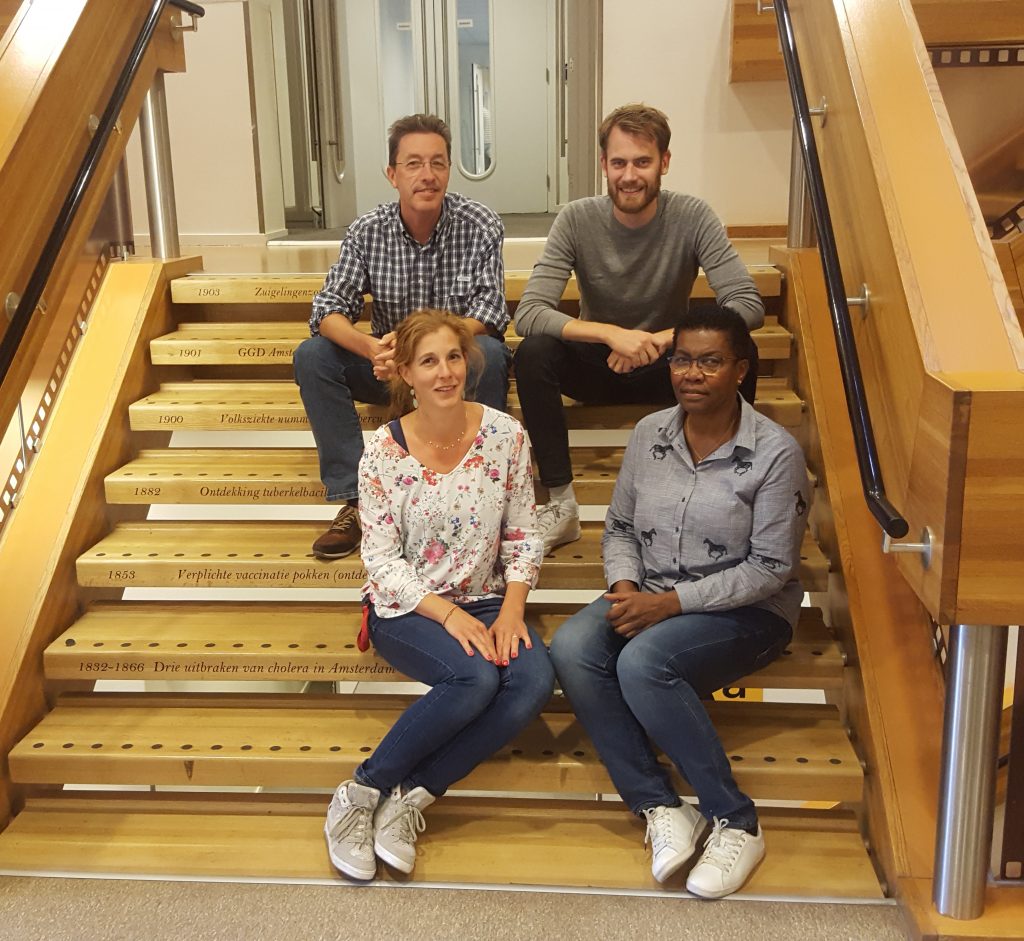
20 Sep Unique HIV cohort study celebrates 10 years of new insight and dispelling some beliefs
As part of our 10th anniversary celebrations, we’re looking back on some of our milestones. Follow our celebrations through #AIGHDturns10.
[Photo above and below: Members of the AGEhIV team from AIGHD, Amsterdam UMC and GGD]
Dispelling previous beliefs about HIV and ageing, inspiring similar cohort studies and fostering research collaborations around the world; the AGEhIV Cohort Study has accomplished a lot in 10 short years.
The study was the first study globally of its kind to explore, in-depth, the hypothesis that treated HIV infection may be associated with accelerated development of non-communicable diseases through accelerated ageing. AIGHD is coordinator of the study, as part of our infectious disease research portfolio. The study was one of the institute’s first research projects, launching shortly after AIGHD was established.

It has been known for some time that HIV causes inflammation and that this may influence the risk of developing various non-communicable diseases (NCD’s) like heart disease, stroke and cancer. There was an impression among some clinicians and people living with HIV that, in spite of being treated for HIV, patients were developing such NCD’s at a relatively young age, i.e. already in their late 40’s/early 50’s.Thus the idea emerged and some early studies suggested that HIV might be associated with accelerated ageing.
The problem with most of those studies, according to Prof. Peter Reiss, AGEhIV principal investigator, is that they compared people living with HIV to the general population with insufficient data on key other risk factors such as lifestyle to account for in the analysis. instead of a group with similar lifestyles.
“In order to robustly determine whether having treated HIV infection, in addition to other known risk factors had an impact on NCD development and/or the ageing process, we needed to recruit a control group that was as similar as possible to those we enrolled in the study who were living with HIV in terms of lifestyle and behavior, except that they did not have HIV” said Prof. Reiss. “Defining and selecting study cohort groups well, dependent on the scientific question you want to answer is absolutely key, because if you don’t, you could draw the wrong conclusions.”
Defining the right control group
The control group was recruited from the sexually transmitted infection (STI) clinic in Amsterdam, hoping to ensure these would be people at risk of STI’s (including HIV) from similar walks of life in terms of sexual habits, risk factors and lifestyle choices – the only difference being they were documented not to have HIV.
In order to determine if those living with HIV had aged faster, the team used a set of biomarkers to evaluate the biological age through blood samples from the two groups and also a group of blood donors from the general population. The results were surprising.
“Whereas the blood donors scored better than average, i.e. were younger than their calendar age, to our surprise, both of the study cohorts showed a biological age that was higher than expected. Those living with the virus did show a biological age which was higher than that in the control group, but the difference was much smaller than prior studies had claimed. This demonstrated that other factors separate from HIV are also contributing to the ageing process,” said Prof Reiss.
Similarly, in another analysis in which the team looked at a measure of brain age, based on images of the brain, those living with HIV did have a somewhat older brain age than the controls, but when repeating this measure again after two years, the change in brain age which had occurred was the same in both groups.
“This result dispelled previous beliefs that the brain of people with HIV, whilst they are being treated and the infection is well suppressed, ages significantly faster than those without the virus,” he added.
Using the already comprehensive cohort data and by collecting additional data as study participants continue to age, the team continues to analyze the impact of living with treated HIV over the longer term as people enter into their 60’s and 70’s.
Inspiring new research and insights around the world
The comprehensive study has already resulted in 30 publications – and the work feels like it only has just started.
“We were one of the first to carefully design the study in this way and ensure our control group was well defined. It’s great to see that this has inspired other researchers in various other parts of the world to set up studies of their own in a similar way,” he said.
“It was always been my intent that this database and the samples we have carefully stored be used by other scientists around the world to explore new ideas and yield novel insights. The lessons learned in the HIV context through AGEhIV hopefully may also be applied – and be helpful – to other settings and diseases.”
For more information, visit the AGEhIV website.
